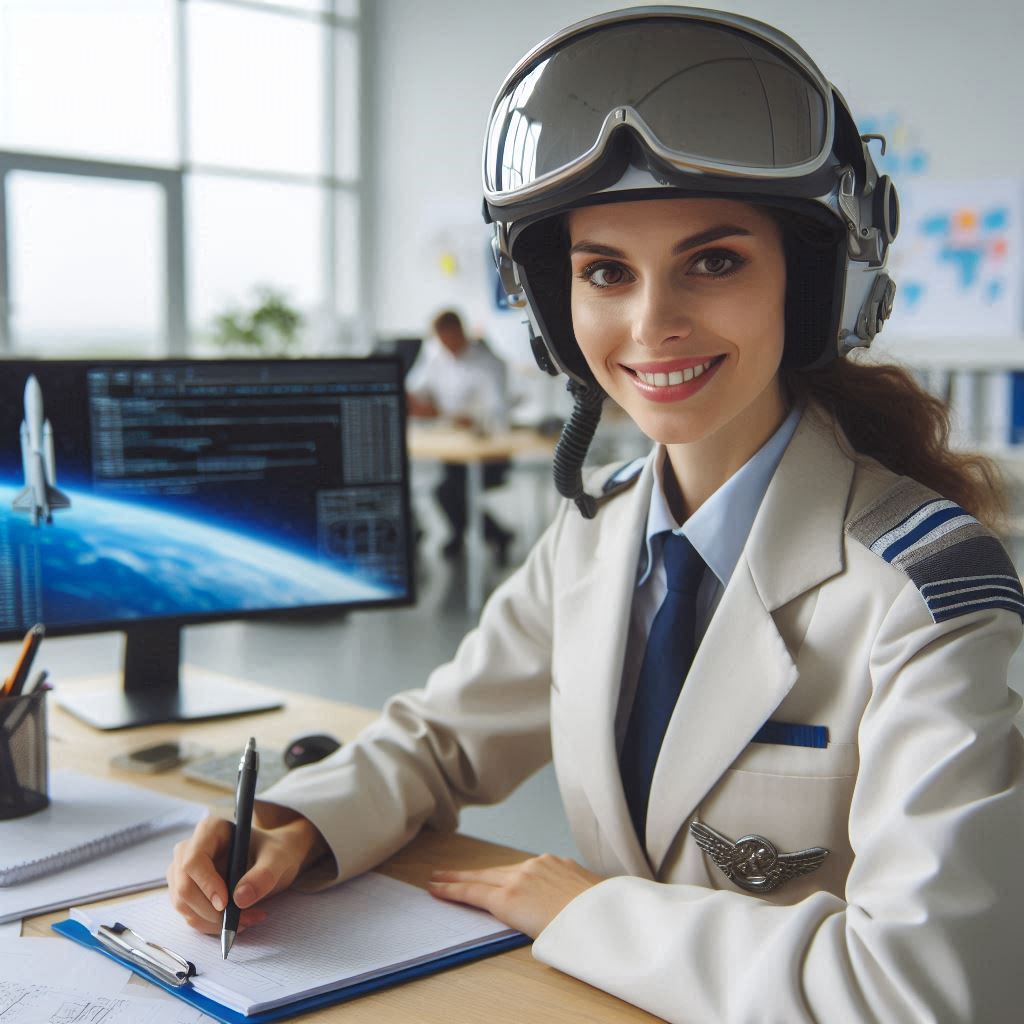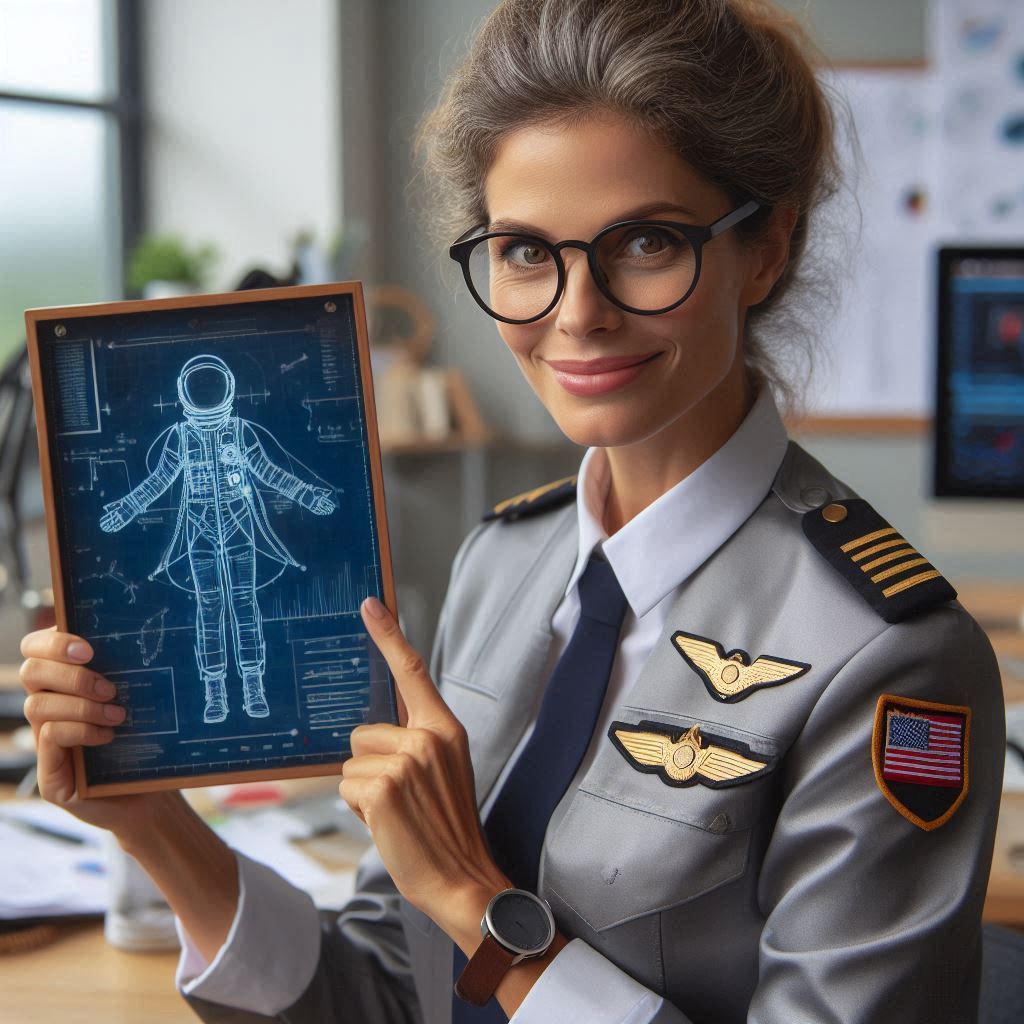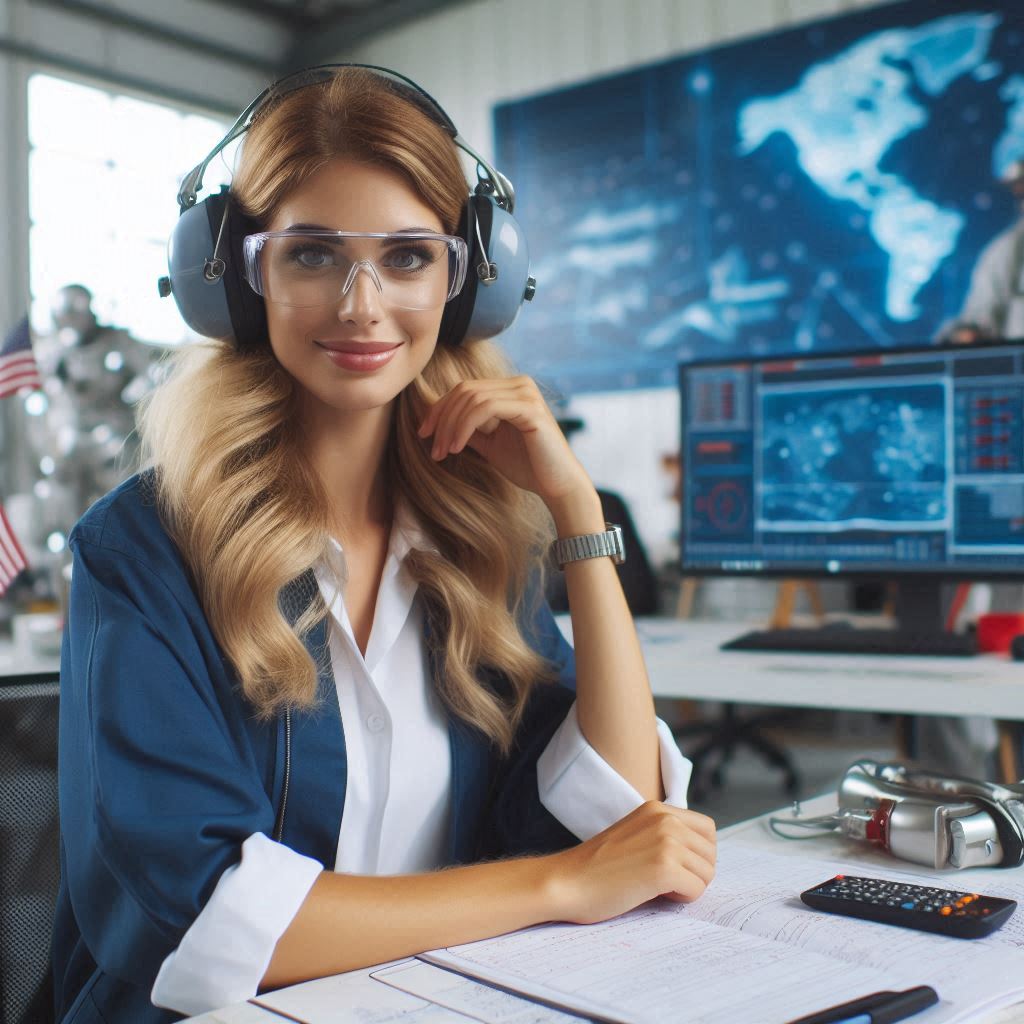Introduction
Embarking on a journey towards advanced degrees in aerospace engineering opens up immense opportunities for growth and innovation in the field.
Continuing education in this specialized area is crucial to stay updated with the latest technologies and developments.
Benefits of Pursuing Advanced Degrees
Obtaining a master’s or Ph.D. in aerospace engineering equips individuals with in-depth knowledge and specialized skills necessary to tackle complex challenges in the industry.
These advanced degrees also enhance career prospects, leading to higher job positions and increased earning potential.
Specializations in Aerospace Engineering
Advanced degrees offer the opportunity to specialize in various subfields of aerospace engineering, such as aerodynamics, propulsion systems, space systems.
This focus allows individuals to delve deeper into their areas of interest and expertise.
Research Opportunities
Pursuing advanced degrees provides access to cutting-edge research opportunities, enabling students to contribute to innovations in aerospace technology.
Engaging in research projects allows individuals to develop critical thinking skills and make significant contributions to the field.
Industry Collaboration
Advanced degree programs often involve collaboration with industry partners, providing students with real-world experience and networking opportunities.
These partnerships bridge the gap between academia and industry, allowing students to work on industry-relevant projects and gain practical skills.
Most Importantly, obtaining advanced degrees in aerospace engineering is essential for individuals looking to advance their careers and make substantial contributions to the field.
Through specialized knowledge, research opportunities, and industry collaborations.
Advanced degree holders are well-equipped to drive innovation and progress in the aerospace industry.
Types of Advanced Degrees in Aerospace Engineering
The Various Options Such as Master’s and PhD Programs
Pursuing an advanced degree in aerospace engineering offers multiple pathways, including Master’s and PhD programs.
Each program caters to different career goals and interests.
Understanding these options helps aspiring engineers choose the right path for their professional development.
Master’s programs in aerospace engineering typically focus on advanced coursework and practical skills.
They offer specializations in areas like aerodynamics, propulsion, and spacecraft design.
A Master’s degree can be a terminal degree or a stepping stone toward a PhD.
PhD programs emphasize research and original contributions to the field.
These programs involve extensive study, research, and dissertation work.
PhD candidates often explore cutting-edge topics and aim to advance the state of the art in aerospace engineering.
The Differences Between Each Type of Degree
A Master’s degree in aerospace engineering usually takes about two years to complete.
It combines coursework with research or design projects.
This degree provides a deep understanding of specialized areas within aerospace engineering.
Master’s programs often require a thesis or capstone project, which allows students to apply their knowledge to a specific problem.
This hands-on experience is valuable for those seeking to enter or advance in the industry.
A PhD program, on the other hand, typically takes four to six years to complete.
The focus is on original research, with students working closely with faculty advisors.
PhD students contribute to the academic and scientific community through their research findings.
The culmination of a PhD program is the dissertation, a substantial piece of original research.
This work must make a significant contribution to the field and is often published in academic journals.
PhD programs prepare graduates for careers in academia, research, and high-level industry positions.
The Benefits and Opportunities Associated with Each Degree
A Master’s degree in aerospace engineering opens up numerous opportunities in industry and government.
Graduates are well-prepared for roles in design, analysis, testing, and project management.
This degree enhances employability and can lead to higher salaries and career advancement.
Specializations within a Master’s program allow students to focus on areas of interest.
This targeted knowledge is highly valued by employers, especially in niche sectors of aerospace engineering.
A Master’s degree also provides a foundation for further study, should one decide to pursue a PhD.
A PhD in aerospace engineering offers distinct advantages for those interested in research and academia.
PhD holders are qualified for faculty positions at universities, where they can teach and conduct research.
They can also lead research and development projects in industry and government labs.
The expertise gained during a PhD program enables graduates to tackle complex engineering problems.
They are often involved in pioneering work, developing new technologies, and pushing the boundaries of the field.
PhD holders are also in a strong position to secure funding for research initiatives.
Choosing between a Master’s and PhD in aerospace engineering depends on one’s career goals and interests.
A Master’s degree offers advanced knowledge and practical skills, ideal for industry roles and career advancement.
It provides specialization and hands-on experience that are highly valued by employers.
A PhD focuses on original research and is suited for careers in academia and high-level industry positions.
It offers the opportunity to contribute to the field through innovative research.
PhD graduates are well-equipped to lead projects, secure funding, and advance aerospace technology.
Both degrees offer significant benefits and open doors to exciting opportunities.
Whether aiming for a career in industry, academia, or research.
An advanced degree in aerospace engineering provides the skills and knowledge needed to succeed in this dynamic field.
Top Universities Offering Advanced Degrees in Aerospace Engineering
When it comes to pursuing advanced degrees in aerospace engineering.
There are several top universities around the world that are known for their exceptional programs in this field.
These universities not only offer a rigorous curriculum but also provide students with access to cutting-edge research opportunities and renowned faculty members.
Some of the Best Universities Known for Their Aerospace Engineering Programs
Several universities are renowned for their aerospace engineering programs. Among the top institutions are:
- Massachusetts Institute of Technology (MIT)
- Stanford University
- California Institute of Technology (Caltech)
- University of Michigan, Ann Arbor
- Georgia Institute of Technology
These universities offer exceptional programs that prepare students for advanced careers in aerospace engineering.
Provide Information on Their Curriculum, Faculty, and Research Opportunities
Massachusetts Institute of Technology (MIT)
MIT‘s aerospace engineering program is highly regarded.
The curriculum includes advanced courses in spacecraft systems, aerodynamics, and propulsion.
MIT‘s faculty includes leaders in aerospace research, such as Professor Missy Cummings and Professor Michael S. S. Hughes.
Students have access to cutting-edge research facilities, including the Space Systems Laboratory and the AeroAstro Lab.
Research opportunities span from space exploration to advanced aerodynamics.
Stanford University
Stanford‘s aerospace engineering program emphasizes both theoretical knowledge and practical application.
Courses cover topics such as space systems, autonomous vehicles, and computational fluid dynamics.
Faculty members like Professor Eileen O‘Brien and Professor Andrei D. V. S. Sturla lead innovative research.
Stanford offers research opportunities in areas like satellite technology and space robotics through the Stanford Space Initiative and the Stanford Aerospace Robotics Lab.
California Institute of Technology (Caltech)
Caltech‘s program focuses on the fundamental aspects of aerospace engineering.
The curriculum includes studies in propulsion, aerodynamics, and space mission design.
Faculty such as Professor David A. C. Poole and Professor Jonathan B. C. H. H. Wang are prominent figures in the field.
Caltech provides research opportunities at the Jet Propulsion Laboratory and the Caltech Space Challenge.
Allowing students to work on pioneering space missions and technologies.
University of Michigan, Ann Arbor
The University of Michigan offers a comprehensive aerospace engineering program with courses in structures, dynamics, and propulsion systems.
Faculty members like Professor Scott L. E. Smith and Professor Kyle L. K. Smith are known for their research contributions.
Research opportunities include the Michigan Aerospace Robotics Lab and the Space Physics Research Lab, focusing on satellite technology and space systems.
Transform Your Career Today
Unlock a personalized career strategy that drives real results. Get tailored advice and a roadmap designed just for you.
Start NowGeorgia Institute of Technology
Georgia Tech‘s aerospace program features a strong curriculum in aerodynamics, propulsion, and systems engineering.
Notable faculty members include Professor R. A. S. Lewis and Professor Margaret S. Kim.
Students can engage in research through the Aerospace Systems Design Laboratory and the Space Systems Research Center
Exploring advanced aerospace technologies and space exploration.
The Admission Requirements and Application Process for Each University
Massachusetts Institute of Technology (MIT)
MIT requires a completed application form, GRE scores, transcripts, and letters of recommendation.
The application includes a statement of purpose and a resume.
Applicants should have a strong academic background in engineering or a related field.
Stanford University
Stanford requires GRE scores, academic transcripts, letters of recommendation, and a statement of purpose.
The application process also involves an interview.
Applicants should demonstrate a solid foundation in engineering principles and relevant research experience.
California Institute of Technology (Caltech)
Caltech‘s application includes GRE scores, transcripts, letters of recommendation, and a personal statement.
The admissions committee looks for a strong background in mathematics and science, along with relevant research experience.
University of Michigan, Ann Arbor
The University of Michigan requires GRE scores, academic transcripts, letters of recommendation, and a statement of purpose.
Applicants should have a solid foundation in aerospace engineering or a related field and demonstrate research potential.
Georgia Institute of Technology
Georgia Tech requires GRE scores, transcripts, letters of recommendation, and a statement of purpose.
The admissions process considers academic performance, research experience, and alignment with faculty research interests.
Advanced degrees in aerospace engineering from top universities offer rigorous curricula, distinguished faculty, and extensive research opportunities.
Understanding each university‘s curriculum, faculty, and research facilities is crucial for making an informed decision.
Meeting admission requirements and following the application process carefully will enhance your chances of securing a place in these prestigious programs.
Read: Freelance vs. Firm: Career Paths for US Architects
Specializations within aerospace engineering advanced degrees
Within the realm of aerospace engineering advanced degrees, there are various specializations that individuals can pursue.
These specializations allow for a focused approach to specific areas of the field, catering to different interests and career goals.
The Different Areas of Specialization Within the Field
Aerospace engineering offers various specializations, each with its own focus and opportunities.
Understanding these areas helps you tailor your education and career path. Here are some key specializations:
- Aerodynamics: This specialization focuses on the study of airflow around objects. It is crucial for designing efficient aircraft and spacecraft.
- Propulsion: Engineers in this field work on engines and propulsion systems. They design and optimize engines for aircraft, rockets, and spacecraft.
- Structures and Materials: This area deals with the design and analysis of structural components. It involves selecting materials and ensuring structural integrity under various conditions.
- Avionics: This specialization involves designing and developing electronic systems for aircraft and spacecraft. It includes navigation, communication, and control systems.
- Space Systems: Engineers in this field work on spacecraft design, satellite systems, and space exploration missions. They focus on systems that operate in space environments.
- Manufacturing and Production: This specialization involves the processes and technologies used to manufacture aerospace components. It includes quality control and production efficiency.
How to Choose the Right Specialization Based on Career Goals and Interests
Selecting the right specialization depends on your career goals and interests.
Reflect on what excites you most about aerospace engineering and where you see yourself in the future. Here‘s how to make an informed choice:
- Assess Your Interests: Identify which aspects of aerospace engineering captivate you. For example, if you are fascinated by flight dynamics, aerodynamics might be a good fit.
- Consider Career Goals: Think about the type of roles you aspire to. If you aim to work in space exploration, specializing in space systems could align with your goals.
- Evaluate Industry Demand: Research the demand for different specializations. High demand can offer better job prospects and opportunities for advancement.
- Seek Advice: Talk to professionals in the field and academic advisors. They can provide insights into various specializations and their career prospects.
- Explore Educational Options: Review the courses and research opportunities available in each specialization. Ensure that the program aligns with your interests and career objectives.
The Job Prospects and Demand for Each Specialization in the Industry
Each specialization in aerospace engineering offers unique job prospects and demand levels. Here‘s a snapshot of the opportunities available:
- Aerodynamics: There is a strong demand for aerodynamics specialists in both commercial aviation and defense sectors. They work on optimizing aircraft performance and fuel efficiency.
- Propulsion: The propulsion field is essential for developing advanced engines and propulsion systems. It has high demand due to ongoing innovations in aerospace technology.
- Structures and Materials: Specialists in structures and materials are needed to ensure the safety and efficiency of aerospace components. This specialization remains crucial in maintaining and improving structural integrity.
- Avionics: The rise of advanced electronic systems in aviation and space exploration has increased demand for avionics engineers. They work on critical systems that ensure the functionality and safety of aerospace vehicles.
- Space Systems: With the growing interest in space exploration and satellite technology, space systems specialists are in high demand. They contribute to designing and managing space missions and satellite operations.
- Manufacturing and Production: This field offers job opportunities in aerospace companies focused on efficient production and quality control. As the industry grows, so does the need for skilled professionals in manufacturing.
Choosing the right specialization within aerospace engineering requires careful consideration of your interests, career goals, and industry demand.
Each area offers unique opportunities and contributes to the field‘s advancement.
By understanding these specializations, you can make an informed decision and position yourself for a successful career in aerospace engineering.
Read: Impact of Local Building Codes on US Architecture.
Career Opportunities with an Advanced Degree in Aerospace Engineering
Individuals with advanced degrees in aerospace engineering have a wide range of career opportunities available to them.
These advanced degrees, such as a Master’s or PhD, open doors to positions that require specialized knowledge and skills in this dynamic field.
The Diverse Range of Career Paths Available
Individuals with advanced degrees in aerospace engineering have access to a diverse range of career paths.
These paths span across various industries, including aerospace, defense, research, and academia.
An advanced degree provides specialized knowledge and skills, opening doors to high-level positions.
Aerospace engineers work on designing, developing, and testing aircraft and spacecraft.
They may specialize in areas like propulsion, aerodynamics, avionics, or systems engineering.
With a Master’s or PhD, aerospace engineers often take on roles that involve leading projects and teams.
Research scientists in aerospace engineering focus on advancing technology and solving complex engineering problems.
They work in research labs, universities, and private companies, conducting experiments and developing new technologies.
A PhD is typically required for these positions, especially in academia and government research labs.
Aerospace systems analysts evaluate the performance and efficiency of aerospace systems.
They analyze data, model system behaviors, and suggest improvements.
This role is crucial in optimizing system performance and ensuring safety and reliability.
Systems analysts often have advanced degrees and a strong background in systems engineering and data analysis.
Job Roles Such as Aerospace Engineer, Research Scientist, Aerospace Systems Analyst
Aerospace engineers with advanced degrees often work on cutting-edge projects involving aircraft, spacecraft, and defense systems.
They may be involved in the entire lifecycle of a product, from concept and design to testing and production.
Advanced degrees enable engineers to specialize in areas like structural analysis, propulsion systems, or materials science.
Research scientists with PhDs play a key role in advancing aerospace technology.
They conduct research on new materials, propulsion methods, and aerodynamics.
These scientists contribute to publications and often present their findings at conferences.
Their work is essential for pushing the boundaries of what is possible in aerospace engineering.
Aerospace systems analysts focus on the integration and optimization of complex aerospace systems.
They work with data from simulations and real-world tests to improve system performance.
This role requires a deep understanding of aerospace systems and the ability to analyze large datasets.
Showcase Your Business Today
Reach thousands of readers actively exploring professional services. Publish your business profile and grow your audience now.
Publish NowInformation on Salary Trends and Growth Opportunities
Salaries for professionals with advanced degrees in aerospace engineering are generally higher than those with only a bachelor’s degree.
According to industry reports, aerospace engineers with a Master’s degree typically earn significantly more than their counterparts with a bachelor’s degree.
PhD holders, especially in research or academic positions, can earn even higher salaries.
Research scientists and aerospace systems analysts also enjoy competitive salaries, reflecting the specialized skills required for these roles.
The demand for advanced expertise in areas like propulsion, materials science, and systems engineering drives higher compensation.
The aerospace industry offers strong growth opportunities, particularly for those with advanced degrees.
The ongoing development of new technologies, such as electric aircraft and advanced propulsion systems, creates a demand for skilled professionals.
Additionally, the expanding commercial space sector offers new opportunities for research and innovation.
Advanced degrees in aerospace engineering unlock diverse career paths and opportunities.
Roles such as aerospace engineer, research scientist, and aerospace systems analyst benefit from the specialized knowledge and skills gained through advanced education.
These positions offer the chance to work on groundbreaking projects and contribute to technological advancements.
Salaries for professionals with advanced degrees in aerospace engineering are competitive, reflecting the demand for specialized skills.
The industry continues to grow, driven by new technologies and the expanding space sector.
This growth presents numerous opportunities for career advancement and professional development.
Pursuing an advanced degree in aerospace engineering is a valuable investment, providing access to high-level roles and the potential for significant career growth.
Whether in industry, research, or academia, advanced degree holders are well-positioned to lead and innovate in the dynamic field of aerospace engineering.
Read: The Intersection: Architecture & Tech in Modern USA.

Research and Innovation in Aerospace Engineering
Aerospace engineering is a field that is constantly pushing the boundaries of technology and innovation.
Researchers and engineers working in this industry are always looking for ways to improve existing systems and develop new technologies that can propel us further into space exploration.
Here, we will showcase some of the cutting-edge research happening in the field of aerospace engineering and how individuals with advanced degrees can contribute to this exciting industry.
Showcasing Cutting-Edge Research
One area of research in aerospace engineering that is gaining momentum is the development of advanced propulsion systems.
Researchers are exploring new ways to power spacecraft, such as ion propulsion and nuclear thermal propulsion.
Which could significantly reduce travel times for missions to Mars and beyond.
Additionally, there is ongoing research into materials science.
With a focus on creating lightweight yet durable materials that can withstand the extreme conditions of space.
Another exciting area of research in aerospace engineering is autonomous systems.
Engineers are working on developing drones and spacecraft that can navigate and operate independently, without the need for human intervention.
This technology has the potential to revolutionize space exploration by enabling longer missions and more efficient data collection.
Recent Advancements in Aerospace Technology
Recent advancements in aerospace technology have opened up new possibilities for space exploration.
For example, reusable rocket technology has made it more cost-effective to launch missions into space, paving the way for more frequent and ambitious missions.
Companies like SpaceX and Blue Origin are at the forefront of this technology, with plans to colonize Mars in the coming decades.
In addition to reusable rocket technology, advancements in miniaturized satellites have also revolutionized the field of aerospace engineering.
These small satellites, known as CubeSats, are being used for a variety of purposes, including Earth observation, telecommunications, and scientific research.
Their small size and low cost make them ideal for universities and research institutions looking to conduct experiments in space.
Contribution of Individuals with Advanced Degrees
Individuals with advanced degrees in aerospace engineering play a crucial role in advancing the industry through research and innovation.
These individuals have the knowledge and expertise needed to tackle complex engineering challenges and develop new technologies that can push the boundaries of space exploration.
By pursuing advanced degrees, engineers can specialize in a particular area of aerospace engineering.
Propulsion systems or materials science, and make significant contributions to the field.
Furthermore, individuals with advanced degrees can work in research institutions, government agencies.
Private companies to conduct groundbreaking research that has the potential to shape the future of space exploration.
Collaborating with other experts, engineers can innovate and develop technologies to explore new worlds and expand our understanding of the universe.
Therefore, research and innovation are at the heart of aerospace engineering.
With recent advancements in technology and a growing interest in space exploration.
Individuals with advanced degrees have the opportunity to make a significant impact on the industry.
By contributing to cutting-edge research projects and developing new technologies.
These engineers are shaping the future of space exploration and pushing the boundaries of what is possible in aerospace engineering.
Read: Economic Indicators and Their Influence on US Architects
Discover More: Understanding Systems Engineering Methodologies
Networking Tips for Aerospace Engineering Students
Tips on How to Network with Professionals in the Field
Networking is crucial for advancing in the aerospace industry.
Building connections with professionals can open doors to new opportunities and provide valuable insights.
Start by attending industry events, workshops, and seminars where you can meet peers and experienced professionals.
Leverage online platforms like LinkedIn to connect with aerospace professionals.
Engage in discussions, share relevant content, and participate in groups related to aerospace engineering.
LinkedIn is a powerful tool for maintaining connections and showcasing your professional interests.
When networking, focus on building genuine relationships rather than simply seeking opportunities.
Show interest in others’ work, ask insightful questions, and offer your perspective.
Networking is a two-way street, so be prepared to offer help or share knowledge where you can.
The Importance of Joining Professional Organizations and Attending Conferences
Joining professional organizations is a strategic way to network and stay informed about industry trends.
Organizations like the American Institute of Aeronautics and Astronautics (AIAA) offer resources, networking events, and professional development opportunities.
Membership provides access to journals, conferences, and special interest groups.
Attending conferences is another effective way to network and learn.
Conferences gather industry experts, researchers, and professionals to discuss the latest advancements and challenges in aerospace engineering.
These events provide a platform to present your work, learn from others, and establish connections.
Active participation in professional organizations and conferences enhances your visibility in the field.
It shows commitment to your profession and allows you to stay updated on emerging technologies and industry practices.
Advice on Building a Strong Professional Brand and Advancing in the Aerospace Industry
Building a strong professional brand involves showcasing your skills, achievements, and professional interests.
Start by maintaining an updated and detailed LinkedIn profile.
Highlight your education, experience, projects, and any certifications or publications.
Use a professional photo and write a clear, concise summary that reflects your career goals and expertise.
Create a personal website or portfolio to display your work, including projects, research papers, and presentations.
This online presence serves as a digital resume and allows potential employers and collaborators to see your capabilities.
Engage in continuous learning and professional development.
Enroll in courses, earn certifications, and stay informed about new technologies and methodologies in aerospace engineering.
This commitment to growth not only enhances your skills but also signals your dedication to the field.
Mentorship is another valuable aspect of professional development.
Seek mentors within your organization or through professional networks.
Mentors can provide guidance, share their experiences, and help you navigate your career path.
Networking, joining professional organizations, and attending conferences are essential strategies for advancing in the aerospace industry.
Building connections with professionals, staying informed about industry trends, and actively participating in the community can open doors to new opportunities.
Creating a strong professional brand is crucial for showcasing your skills and achievements.
An updated LinkedIn profile, a personal website, and continuous learning contribute to a strong professional presence.
Engaging in mentorship relationships also provides valuable guidance and support.
By actively networking, developing your professional brand, and continuously learning, you position yourself for success in the aerospace industry.
These efforts enhance your visibility, credibility, and career prospects, helping you achieve your professional goals in this dynamic and innovative field.
Find Out More: Wind Turbine Technician Internship Programs
Conclusion
Pursuing advanced degrees in aerospace engineering opens up a world of opportunities for individuals interested in this field.
The specialized knowledge and skills gained through these programs prepare students for challenging and rewarding careers.
By summarizing the key points discussed in this blog post.
It is evident that advanced degrees in aerospace engineering provide a deeper understanding of complex concepts.
Practical experience through research and projects, and networking opportunities within the industry.
It is crucial to reiterate the importance of pursuing advanced degrees in aerospace engineering to stay competitive in the evolving aerospace industry.
With advancements in technology and increasing demand for innovative solutions, having a higher level of education can set individuals apart in this field.
As such, I encourage readers who are passionate about aerospace engineering to consider furthering their education by pursuing advanced degrees.
By doing so, they can explore the exciting opportunities available in this field.
Contribute to cutting-edge research, and make a lasting impact on the future of aerospace technology.
[E-Books for Sale]
The Big Book of 500 High-Paying Jobs in America: Unlock Your Earning Potential
$19.99 • 500 High-Paying Jobs • 330 pages
Explore 500 high-paying jobs in America and learn how to boost your career, earn more, and achieve success!
See All 500 High-Paying Jobs of this E-Book
1001 Professions Without a Degree: High-Paying American Jobs You Can Start Now
$19.99 • 1001 Professions Without a Degree • 174 pages
Discover 1001 high-paying jobs without a degree! Unlock career tips, skills, and success strategies for just $19.99!




